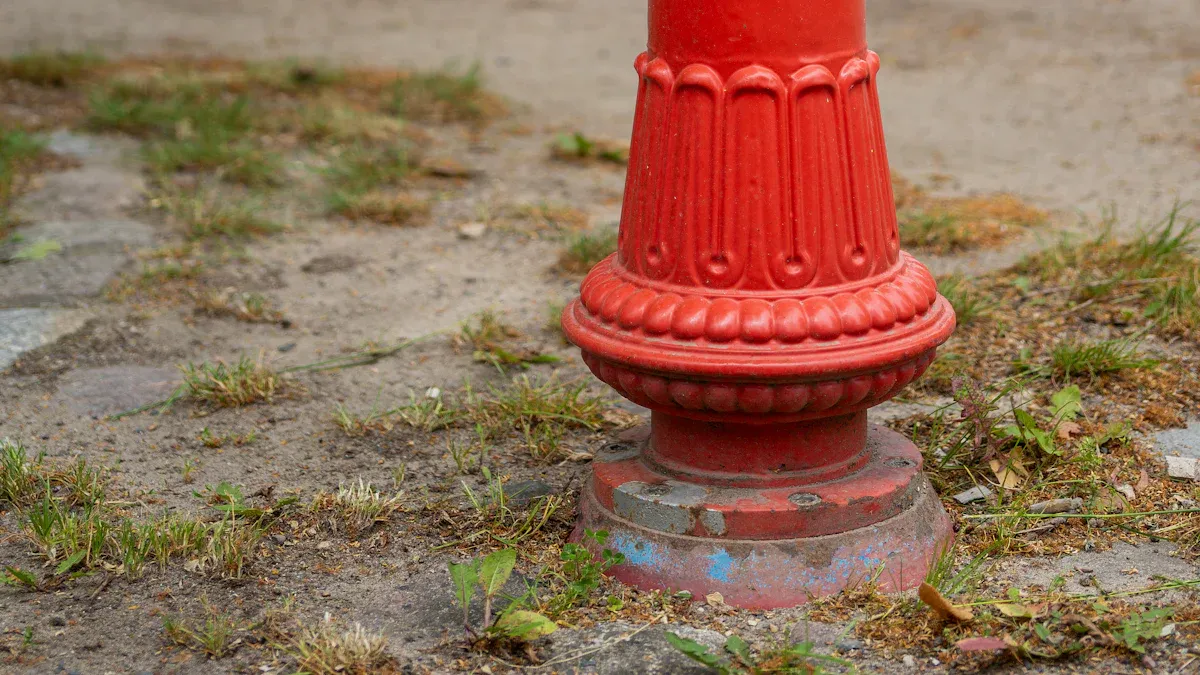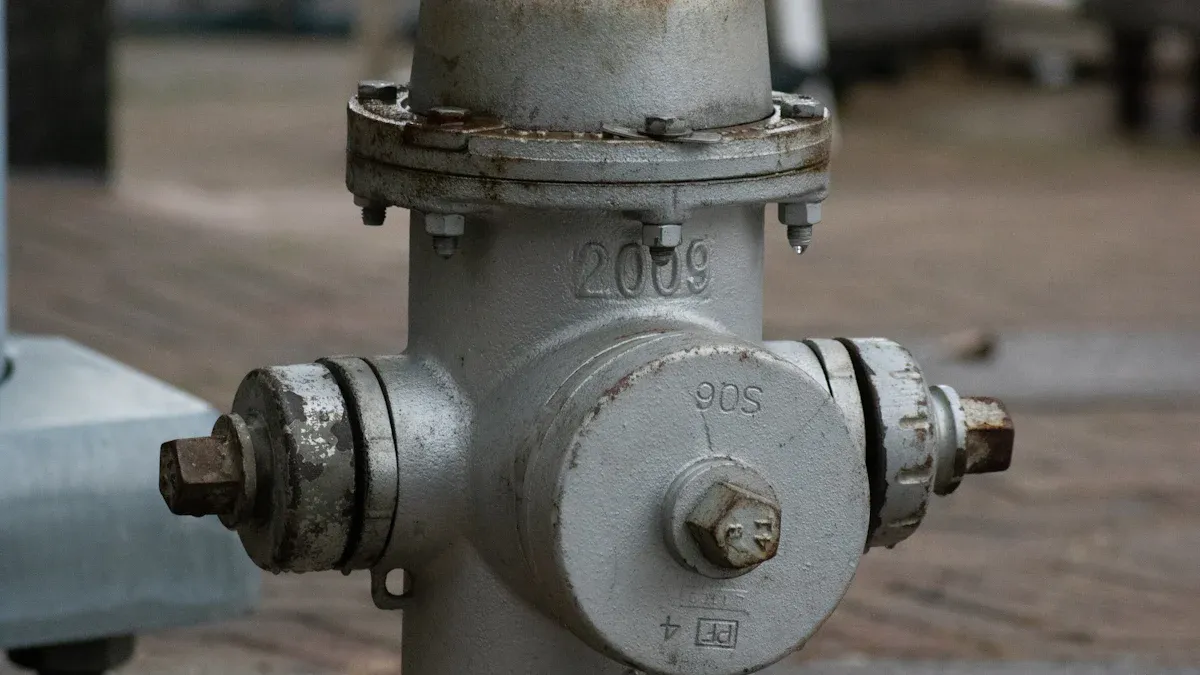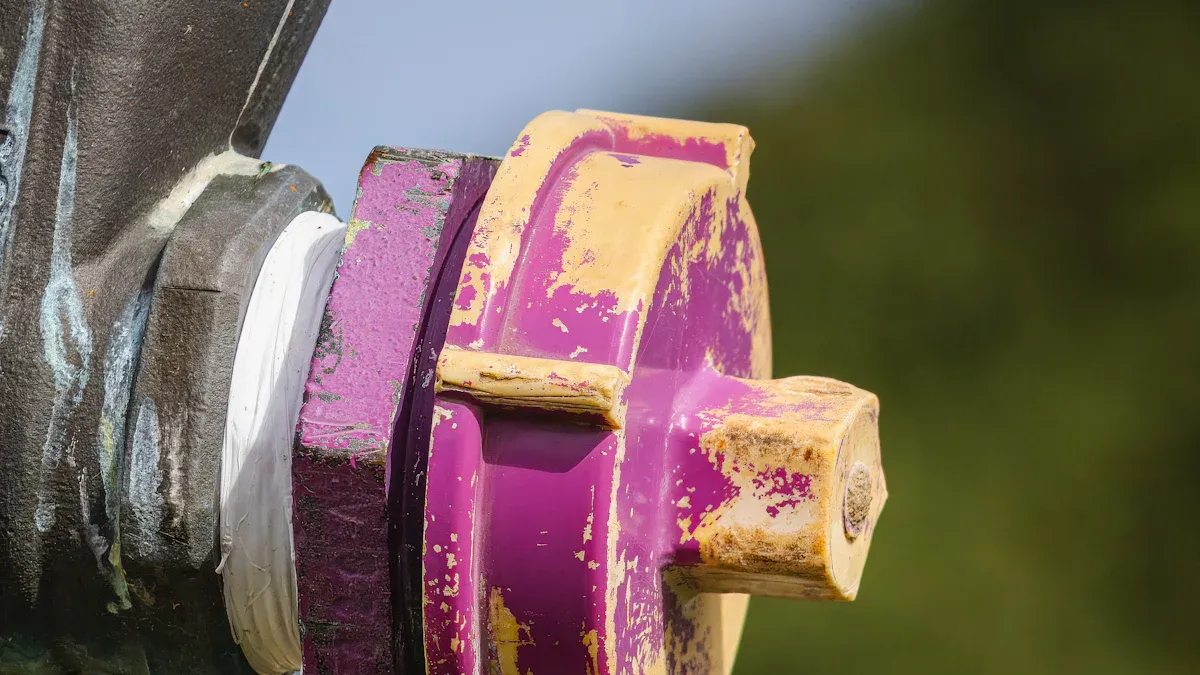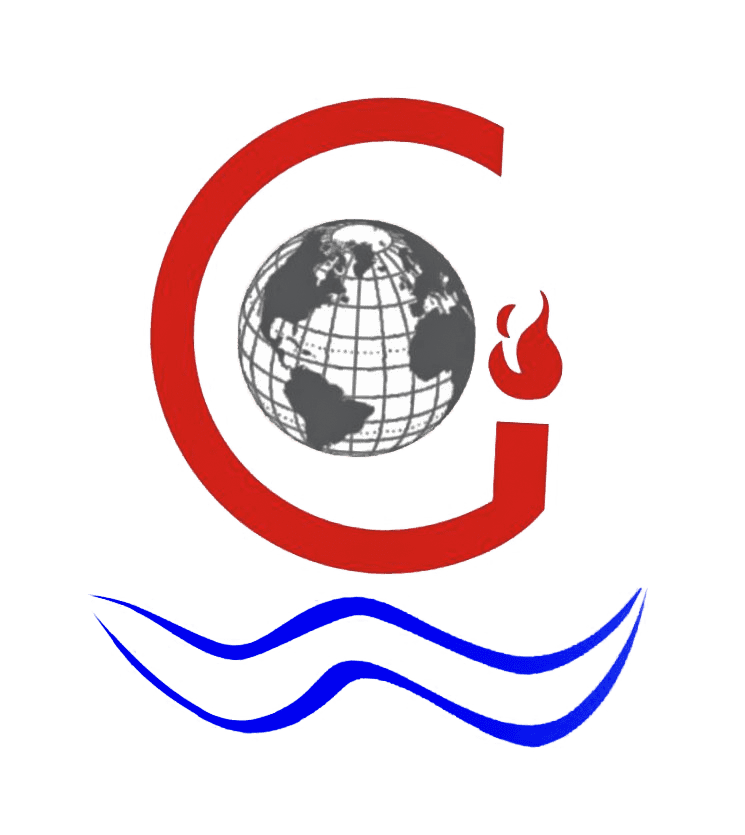
A DIN landing valve with Storz adapter with cap uses precision engineering and standardized materials to keep water from leaking at connection points. People rely on the Pressure Reducing Landing Valve, Fire Hose Landing Valve, and Fire Hydrant Landing Valve for strong performance. Strict standards help these systems protect property and lives.
DIN Landing Valve with Storz Adapter with Cap: Components and Assembly

DIN Landing Valve Design
A DIN landing valve with Storz adapter with cap starts with a strong foundation. Manufacturers use brass or copper alloy for the valve body. These metals resist corrosion and handle high pressure, which means the valve stays reliable even in tough conditions. Forged brass gives extra strength, so the valve can withstand working pressures up to 16 bar and test pressures up to 22.5 bar. Some valves get protective coatings to fight off harsh weather and chemicals. This careful choice of materials helps the valve deliver a watertight seal and meet international safety standards.
Storz Adapter Coupling
The Storz adapter coupling makes connecting hoses quick and easy. Its symmetrical design lets firefighters snap hoses together without worrying about matching male or female ends. The locking mechanism creates a tight fit, stopping water from leaking out. High-strength materials like aluminum alloys and brass keep the coupling strong under pressure. Firefighters trust this system because it saves time and keeps water flowing where it’s needed most. The quick-connect feature means no tools are needed, which helps during emergencies.
Cap and Sealing Elements
Caps on a Din landing valve with storz adapter with cap use forged 6061-T6 aluminum alloy for strength. These caps resist pressure and avoid stress fractures. Inside, black pressure gaskets made from NBR synthetic rubber provide excellent water resistance and abrasion protection. Pressure indication holes show if water is behind the cap, adding a layer of safety. Chains or cables keep the cap attached, so it’s always ready for use. Regular inspections and maintenance help these sealing elements stay effective and prevent leaks.
Tip: Fire departments inspect and test seals often to make sure everything works perfectly. They check for damage, corrosion, and leaks, replacing any worn parts right away.
Sealing Mechanism and Standards

Gaskets and O-Rings
Gaskets and O-rings play a huge role in keeping water inside the system and stopping leaks. Manufacturers choose materials that can handle high pressure and tough conditions. Polyurethane gaskets stand out because they are strong and last a long time. They do not wear down easily, even when water rushes through at high speeds. Polyurethane gaskets also stay flexible in both hot and cold weather, which helps them keep a tight seal year-round. EPDM O-rings are another top choice. They resist water, steam, and weathering, making them perfect for plumbing and firefighting systems. These O-rings work well under pressure and do not break down quickly. Non-asbestos materials and graphite sometimes get used for even higher pressure or steam, but for most water applications, polyurethane and EPDM lead the way.
Here are some reasons why these materials are preferred:
- Polyurethane gaskets have ultra-high strength and durability under pressure.
- They resist abrasion and absorb almost no water.
- Polyurethane stays flexible from -90°F to 250°F.
- EPDM O-rings resist water, steam, and weathering.
- Polyurethane O-rings offer great abrasion resistance and tensile strength.
- Non-asbestos and EPDM materials work well in high-pressure water environments.
When a Din landing valve with storz adapter with cap uses these gaskets and O-rings, it can handle tough firefighting situations without leaking.
Storz Connection Features
The Storz connection is famous for its quick and secure coupling. Firefighters can connect hoses in seconds, even if they are wearing gloves or working in the dark. The symmetrical design means there is no need to match up male and female ends. Instead, both sides look the same and twist together with a simple push and turn. This design helps create a tight seal every time. The locking lugs on the Storz adapter grip firmly, so the connection does not loosen under pressure. Inside the coupling, the gasket or O-ring sits in a groove, pressing tightly against the metal. This stops water from escaping, even when the system is under high pressure.
Note: The Storz connection’s speed and reliability make it a favorite in emergency situations. Firefighters trust it to deliver water fast and without leaks.
A Din landing valve with storz adapter with cap uses these features to make sure water only goes where it is needed.
Compliance with DIN and International Standards
Meeting strict standards is key for safety and reliability. DIN standards, like DIN EN 1717 and DIN EN 13077, set the rules for how valves and adapters should work. These standards make sure that drinking water and firefighting water stay separate, which keeps water safe and clean. Equipment built to these standards works correctly during emergencies. Redundant control systems and daily checks help keep everything ready for action. The standards also require regular flushing of valves, which prevents contamination and keeps the system reliable.
Some important points about compliance:
- DIN standards ensure hygienic separation of water supplies.
- Equipment must pass tests for pressure and volume to meet safety rules.
- Automated checks and regular maintenance keep systems ready for emergencies.
- Marine fire hydrants and valves often meet JIS, ABS, and CCS standards for extra durability.
A Din landing valve with storz adapter with cap that meets these standards gives firefighters confidence. They know the system will work when it matters most.
Installation, Maintenance, and Reliability
Proper Installation Practices
Firefighters and technicians know that proper installation is the first step to a watertight seal. They always inspect every fitting, port, and O-ring before assembly. Damaged parts can cause leaks. They avoid cross-threading by aligning threads carefully. Over-tightening fittings can crush O-rings and lead to leaks. Lubricating O-rings helps prevent pinching or cutting. Clean sealing surfaces matter, so they check for scratches or dirt. Rushing the job often leads to mistakes. They watch for misalignment, uneven gaps, and wear patterns. Using the right torque keeps everything secure. Dirt or debris on fittings can block a good seal. Damaged O-rings from pinching or wear create leak paths.
- Inspect all components before assembly
- Align threads to avoid cross-threading
- Lubricate O-rings to prevent damage
- Clean sealing surfaces for best results
- Use correct torque for fittings
- Avoid contamination from dirt or debris
Tip: Taking time during installation helps prevent leaks and keeps the system reliable.
Routine Inspection and Maintenance
Routine checks keep the system working well. Fire departments inspect DIN landing valves with Storz adapters every six months. They look for leaks, worn parts, and test valve operation. Matching valve and adapter sizes is important. Technicians check for corrosion and keep a maintenance log. Scheduling regular checks helps ensure safety and readiness.
- Inspect every six months
- Check for leaks and wear
- Test valve operation
- Verify correct sizes
- Look for corrosion
- Keep a maintenance log
Material Durability and Corrosion Resistance
Material choice affects long-term reliability. High-performance elastomers and special coatings resist water and last in tough environments. Materials must stand up to salt, moisture, and temperature changes. Fire-resistant materials help prevent flame and smoke spread. Flexible and durable parts handle heavy loads and movement. For example, silicone-based sealants expand with heat and stay flexible, keeping seals tight. Marine doors use aluminum or steel with fire-resistant insulation and strong seals. These materials pass strict tests for pressure, leakage, and fire resistance. Certification proves they work well in firefighting and marine settings.
Note: Durable, flexible, and fire-resistant materials help maintain watertight integrity for years.
A Din landing valve with storz adapter with cap keeps water inside the system. Each part works together to stop leaks and boost reliability. Regular checks and maintenance help the system stay safe and strong. The table below shows how these steps support long-term performance.
| Installation and Maintenance Aspect | Key Activities and Checks | Contribution to Safety and Performance |
|---|---|---|
| Annual Maintenance | Inspections, valve operation tests, pressure verification | Detects early issues, preventing failures during emergencies and maintaining performance |
FAQ
How does the Storz adapter help firefighters during emergencies?
The Storz adapter lets firefighters connect hoses fast. They do not need tools. This quick action saves time and helps control fires sooner.
Tip: Firefighters trust the Storz system for its speed and reliability.
What materials make the valve and adapter last longer?
Manufacturers use brass, aluminum, and high-quality rubber. These materials resist corrosion and pressure. They help the valve and adapter work well for many years.
How often should teams inspect the DIN landing valve with Storz adapter?
Teams should check the valve and adapter every six months. Regular inspections catch leaks or wear early. This keeps the system safe and ready.
| Inspection Frequency | What to Check | Why It Matters |
|---|---|---|
| Every 6 months | Leaks, wear, corrosion | Ensures safety and reliability |
Post time: Aug-18-2025

